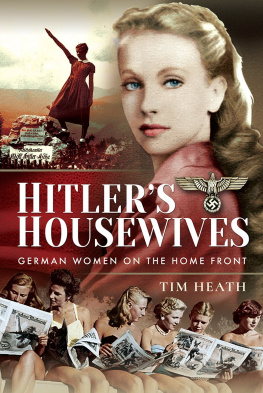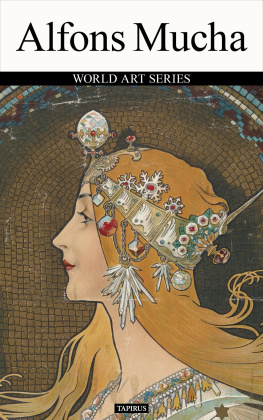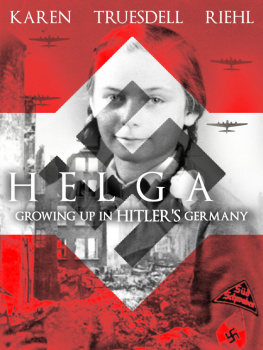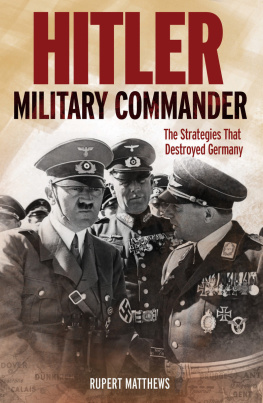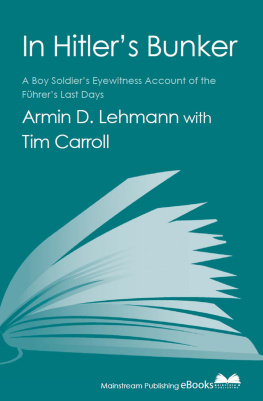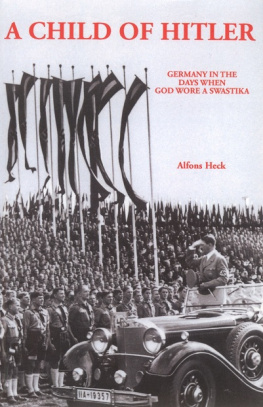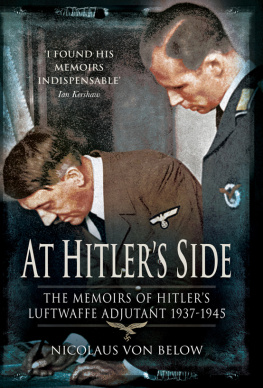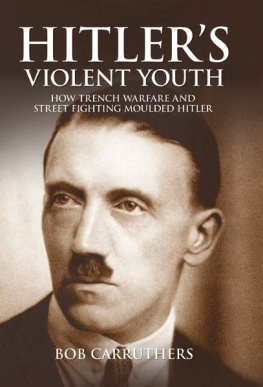
First Aladdin Paperbacks edition March 2000
Copyright 1995 by Helen Ayer
Aladdin Paperbacks
An imprint of Simon & Schuster
Childrens Publishing Division
1230 Avenue of the Americas
New York, NY 10020
www.SimonandSchuster.com
All rights reserved, including the right of
reproduction in whole or in part in any form.
Also available in an Atheneum Books for Young Readers hardcover edition.
Printed and bound in the United States of America
14 16 18 20 19 17 15
The Library of Congress has cataloged the hardcover edition as follows:
Ayer, Eleanor H.
Parallel journeys / by Eleanor H. Ayer with Helen Waterford
and Alfons Heck.1st Ed p. cm.
Includes bibliographical references and index
ISBN 0-689-31830-8 (hc.)
1. HolocaustJewish (1939-1945)Juvenile literature.
2. Waterford, Helen, 1909-Juvenile literature.
3. JewsGermanyFrankfurt am MainBiographyJuvenile literature.
4. Holocaust survivorsUnited StatesBiographyJuvenile literature.
5. Heck, Alfons, 1928-Juvenile literature.
6. HitlerJugendBiographyJuvenile literature.
I. Waterford, Helen, 1909- II. Heck Alfons, 1928- III. Title
D804.3.A98 1995 943.0860922dc20 [B] 94-23277 CIP AC
ISBN-13: 978-0-689-83236-9 (ISBN-10: 0-689-83236-2) (pbk.)
eISBN-13: 978-1-44244-099-9
CONTENTS
INTRODUCTION
Tis strange, but true;
for truth is always
strange,Stranger than fiction.
Truth can be stranger than fiction. It can be undeniable, incredible, amazing, and sometimes horrifying. Truth doesnt bother itself with events that might have happened or could have happened; only with events that actually did happen. Alfons Heck and Helen Waterford are real peoplecommon people who lived through very uncommon times. They were witnesses to one of the darkest hours of modern history. In the six short years between 1939 and 1945, World War II claimed the lives of nearly fifteen million soldiers on battlefields around the world. Among them were many teenage buddies of Alfons Heck, some of the bright, promising, enthusiastic young Germans who worshiped their charismatic leader, Adolf Hitler.
More than twice that number of civiliansnearly thirty-nine million peopleartillery fire. Under the shroud of war, an even blacker event claimed the lives of another eleven million innocent people. This was the Holocaust, the intentional murder of Jews, gypsies, Jehovahs Witnesses, and others whom Adolf Hitler and his Nazi followers deemed undesirable. Among the murdered were some of Helen Waterfords family and closest friends.
Alfonss and Helens lives were permanently, everlastingly transformed by what they experienced as teenagers and young adults in the mid-twentieth century. Out of their experiences grew an obsession to warn the worldThis can happen again! It can happen today, to you, to teenagers of the twenty-first century, just as easily as it happened to young people more than fifty years ago. Modern-day cult leaders with charismatic qualities continue to lure innocent people to follow them, even to die for them, as millions of Hitler Youth once followed their Fhrer.
Sadly, we seem not to learn from our pasts. War has been raging somewhere in the world ever since the end of World War II. Despite the Holocaust, genocidethe intentional murder of an entire race of peoplehas been attempted again. Racial prejudice, bigotry, and anti-Semitism continue to poison our planet. Laws will not stop people from hating; the healing must come from the human soul. Only by understanding each other and trying to see life from the other persons perspective can we begin to live peacefully together under one sky.
These are the messages that Alfons Heck and Helen Waterford attempt to teach. On the following pages, parts of their stories are told in their very own words. You can read their complete stories in their autobiographies, from which the excerpts in Parallel Journeys are taken. Alfons Heck has written A Child of Hitler: Germany in the Days When God Wore a Swastika and a second book, The Burden of Hitlers Legacy. Helen Waterfords life story is titled Commitment to the Dead: One Womans Journey toward Understanding.
Every word in their autobiographies, as well as in Parallel Journeys, is true. Alfons and Helen have seen the depths to which mankind can sink. They ask us only to understand what they are telling usand to learn from it.
PARALLEL JOURNEYS
CHAPTER 1
THE POWER AND THE GLORY
Unlike our elders, we children of the 1930s had never known a Germany without Nazis. From our very first year in the Volksschule or elementary school, we received daily doses of Nazism. These we swallowed as naturally as our morning milk. Never did we question what our teachers said. We simply believed whatever was crammed into us. And never for a moment did we doubt how fortunate we were to live in a country with such a promising future.
It was a terrific time to be young in Germany. If you were a healthy teenager, if you were a patriotic German, if you came from an Aryan (non-Jewish) family, a glorious future was yours. The Nazis promised it. You were one of Adolf Hitlers chosen people. You were part of his Master Race whom he considered the highest class of human beings on earth.
Hitler took special pride in his young people. Members of the Hitlerjugend (Hitler Youth)the Nazis national organization for young Germanswere treated with respect and honor. Constantly Hitler reminded them that one day they would rule the world.
But if you were a young gypsy, a communist, or a Jehovahs Witness, or if you were handicapped in any way, your future was not so promising. To the Nazis you were Untermenschen (low-class citizens). Worst of all the Untermenschen, in Hitlers eyes, were the Jews.
Alfons Heck considered himself fortunate. He was one of the millions of German children who were Adolf Hitlers chosen people, his Master Race. Although Alfons didnt have blond hair and blue eyesthe Nordic Germanic look that Hitler liked moststill he was a German through and through.
From his French ancestors, he had inherited his dark, wavy hair and brown eyes. The Hecks had arrived from France more than 150 years before Hitler came to power. They had settled in the Rhineland region of Germany, close to the French border. For many generations Alfonss family had farmed near the town of Wittlich, raising grapes for the white wine that made the Rhineland famous.
I was raised near the Mosel River in one of the most enchanting valleys of Germany by a grandmother who adored me. When I was just six weeks old, my parents moved to Oberhausen, a large industrial city, taking with them my twin brother, Rudi. Grandmother talked them into leaving me with her temporarily until they got settled in their business. But the temporary stretched into a year, then two, then more. Yet far from feeling abandoned by my parents, I always felt lucky to live on a farm in the beautiful German Rhineland.
Rhineland Germans hated their French neighbors. French soldiers had occupied the Rhineland since Germanys defeat in World War I in 1918. The agreement that ended the war, the Treaty of Versailles, imposed very harsh terms on Germany and its people. One of the rules of this treaty was that the Germans could not rebuild their army and navy. Without a strong military, the allies hoped to keep Germany from starting another war. To keep in training, German soldiers practiced with cardboard guns and wooden tanks. The end to military force also brought an end to military music. No longer were bands allowed to play the march music the German people loved so much.
Next page

